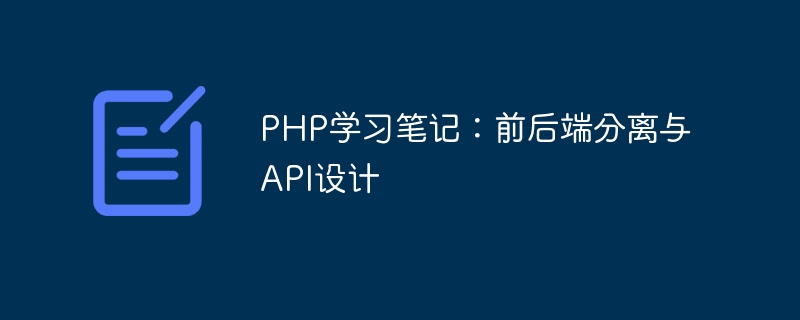

PHP study notes: front-end and back-end separation and API design
Overview:
With the continuous development of the Internet and the increasing user needs, the front-end and back-end separation The development model is getting more and more attention from developers. Front-end and back-end separation refers to separating the development of the front-end and the back-end, and conducting data interaction through APIs to achieve development efficiency and flexibility. This article will introduce the concept of front-end and back-end separation, and how to design an API.
The concept of front-end and back-end separation:
The traditional Web development model is front-end and back-end coupling, that is, the development of front-end and back-end is carried out in the same project. This model is feasible in small projects, but in large projects there will be problems such as redundant front-end and severe coupling of code. The front-end and back-end separation development model separates the development of the front-end and the back-end, so that the development of the front-end and the back-end can be carried out in parallel to improve development efficiency. The core idea of separation of front-end and back-end is data interaction through API. The front-end obtains data by calling the API, and the back-end is responsible for processing the data and returning it to the front-end.
API design principles:
API design example:
The following takes a simple user management system as an example to introduce how to design an API.
Summary:
This article introduces the before and after The concept of end-to-end separation and the principles of API design are discussed, and a simple user management system is taken as an example to show examples of specific API design. The development model that separates the front and back ends can improve development efficiency and flexibility, and is especially suitable for large projects. Not only that, API design is also an important skill that developers must master. Properly designing APIs can improve the maintainability, scalability and security of the system. In practice, we need to rationally design APIs based on the needs and characteristics of specific projects, and follow the principles of consistency, simplicity, security, and high performance.
The above is the detailed content of PHP study notes: front-end and back-end separation and API design. For more information, please follow other related articles on the PHP Chinese website!




